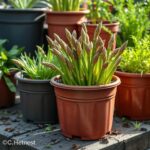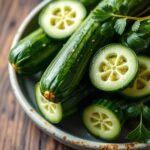Why Should You Avoid Using Terracotta Pots for Container Gardens? 5 Key Reasons Explained

When it comes to container gardening, choosing the right pot can significantly impact your plants' health and growth. While terracotta pots have been a popular choice for many gardeners due to their classic aesthetic and natural materials, there are compelling reasons to consider alternatives. In this article, we will explore five key reasons why you should avoid using terracotta pots for your container garden. From moisture retention issues to temperature fluctuations, understanding these factors can help you make more informed choices that lead to healthier plants and more successful gardening experiences. Discover the drawbacks of terracotta pots and alternative options that might suit your needs better.
Reasons to Avoid Terracotta Pots in Container Gardening
Using terracotta pots in container gardens may seem appealing due to their classic aesthetic; however, they come with a range of disadvantages that can negatively affect plant growth and health. One significant issue is that terracotta is porous, leading to rapid evaporation of moisture and requiring more frequent watering. This can be particularly problematic for plants that prefer consistent water levels. Additionally, terracotta pots can easily break if exposed to extreme temperatures, and they often leach minerals into the soil that can alter pH levels. Overall, while these pots can enhance the visual appeal of your garden, they may not be the most functional choice for successful gardening.
Humidity and Moisture Retention
The porosity of terracotta pots means that they absorb moisture, which can lead to an environment that is too dry for many plants. This can cause stress during hot weather as the pot rapidly loses water due to evaporation. Unlike plastic or metal pots, terracotta's high breathability can disrupt the moisture equilibrium that many plants require, resulting in uneven watering conditions that can stunt growth or even kill plants.
Temperature Sensitivity
Terracotta pots are susceptible to extreme temperature changes, which can result in cracking and breakage. In cold climates, the moisture absorbed by the pot can freeze and expand, causing the material to fracture. Conversely, in hot climates, these pots can heat up quickly, leading to overheated roots that may shock plants. This temperature vulnerability makes them less than ideal for stable container gardening.
Soil pH and Mineral Leaching
One of the lesser-known issues with terracotta pots is that they can leach minerals into the soil over time, which can alter the soil pH. This change in acidity or alkalinity can affect nutrient availability, potentially leading to plant deficiencies or poor growth. Compared to non-porous pots, terracotta can impact the chemical balance necessary for maintaining healthy soil conditions.
See also:
Weight and Mobility
Terracotta pots are typically heavier than plastic alternatives, making them more difficult to move once filled with soil and plants. This can be a significant disadvantage for gardeners who may want to rearrange their container setups or bring plants indoors during certain seasons. The added weight of terracotta can also limit the types of plants that can be grown in containers, as larger pots can become cumbersome and harder to manage.
Cost and Durability
While terracotta pots can have a rustic charm, they are often pricier than their plastic counterparts and can break easily when dropped or exposed to harsh conditions. This can lead to ongoing costs for replacement, making them less economical over time. For gardeners seeking resilience and low-maintenance options, investing in more durable materials might be a wiser choice.
| Feature | Terracotta Pots | Plastic Pots |
|---|---|---|
| Weight | Heavy | Light |
| Moisture Retention | Poor | Good |
| Temperature Resistance | Sensitive | Stable |
| Durability | Fragile | Durable |
| Cost | Higher | Lower |
Understanding the Limitations of Terracotta Pots in Container Gardening
Terracotta pots, while aesthetically pleasing and popular among gardeners, pose significant challenges that can impact plant health and growth. One major issue is their porosity, which allows moisture to escape rapidly, leading to inconsistent soil moisture levels. This can create an environment that is either too dry or too wet, making it difficult for plants to thrive. Additionally, terracotta can absorb salts from fertilizers and nutrients, which may lead to nutrient deficiencies over time. Furthermore, during extreme temperature fluctuations, terracotta pots can crack or break, ruining the container garden and potentially harming the plants inside. Therefore, understanding the limitations of terracotta is crucial for any gardener considering their use in container gardening.
Poor Moisture Retention
Terracotta pots are known for their porous nature, which means they allow moisture to evaporate quickly. This rapid loss of moisture can lead to dry soil conditions, causing stress to plants that require consistent hydration. Without careful monitoring and frequent watering, plants in terracotta pots may suffer from drought stress, ultimately affecting their growth and overall health.
Temperature Fluctuations
One significant drawback of terracotta pots is their tendency to absorb and release heat, making them vulnerable to temperature fluctuations. In hot weather, they can become excessively hot, risking root burn or heat stress in sensitive plants. Conversely, in colder climates, terracotta may not provide adequate insulation, leaving roots susceptible to freezing temperatures that can damage or kill the plants.
See also:
Fragility and Breakage
Terracotta pots are relatively fragile compared to other materials such as plastic or metal. They can chip, crack, or break under the pressure of heavy soil or if subjected to rough handling. This fragility can be a significant concern for gardeners, particularly those who move their containers frequently or experience extreme weather conditions, as any damage to the pot can compromise the integrity and aesthetics of the entire container garden.
Salt Buildup
Over time, salts from fertilizers and minerals in water can accumulate in terracotta pots. Since these pots are porous, they can absorb these salts, leading to a condition known as salt buildup. This buildup can adversely affect the soil quality, causing nutrient deficiencies in plants as essential minerals become locked up and unavailable for uptake. This can hinder healthy plant growth and vigor, making it essential to manage soil conditions carefully.
Limited Size Options
Terracotta pots generally come in standard sizes that may not accommodate larger plants or extensive root systems. For gardeners looking to grow larger species or multiple plants in one container, the size limitations of terracotta can pose a significant obstacle. This constraint can lead to crowded conditions that stifle growth, necessitating a reevaluation of container choices to better suit specific plants and gardening goals.
Questions from Our Readers
Why do terracotta pots absorb moisture?
Terracotta pots are made from porous clay, which means they can absorb water from the soil inside. This moisture absorption can lead to drying out the soil faster, making it challenging to maintain the ideal humidity for your plants. Consequently, gardeners may need to water their plants more frequently, which could lead to stress for the plants.
Are terracotta pots heavy and difficult to move?
Yes, terracotta pots can be quite heavy, especially when filled with soil and plants. This weight can make it difficult to rearrange or move them around your garden or patio. Additionally, their bulkiness may not be ideal for those who want a more flexible gardening setup or need to change their arrangements frequently.
See also:
Do terracotta pots affect soil temperature?
Terracotta pots can affect the temperature of the soil within them. Since they are made of clay, they can absorb and release heat, potentially causing the soil to become too hot in direct sunlight. This temperature fluctuation can lead to stress for the roots of plants, hindering their growth and overall health.
Why are terracotta pots prone to cracks?
Terracotta pots are susceptible to cracking, especially during extreme temperature changes or if they are left outdoors during the winter. The porous nature of the clay can absorb moisture, which may freeze and expand, leading to fractures. This inherent weakness makes them less durable compared to other pot materials, which may not have the same longevity.

If you want to read more articles like Why Should You Avoid Using Terracotta Pots for Container Gardens? 5 Key Reasons Explained, we recommend you check out our Pots category.
Leave a Reply
Related Articles